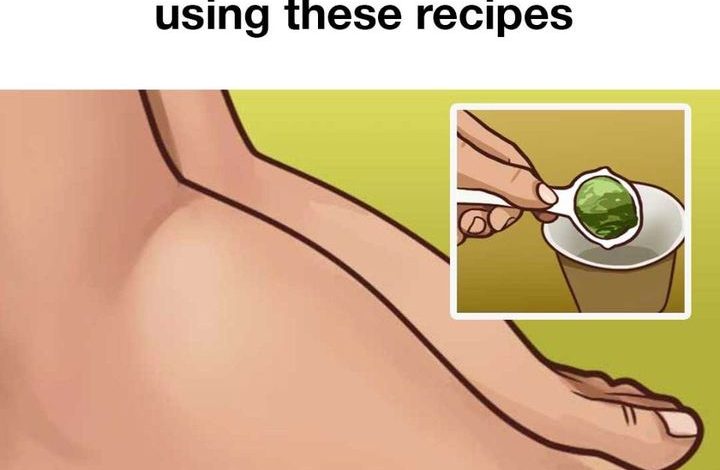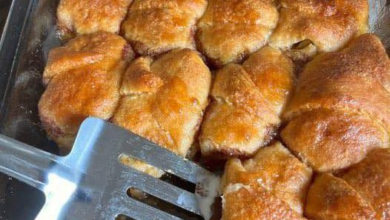Love these recipe ideas

Understanding and Managing Water Retention: What You Need to Know
Dealing with water retention—also known as edema—can be frustrating and uncomfortable. This condition occurs when your body accumulates excess fluids, often causing noticeable swelling in your hands, feet, ankles, or legs. Although it’s frequently harmless and temporary, persistent or unexplained swelling may signal a deeper health concern. That’s why it’s important to understand the underlying reasons, how to recognize the signs, and what you can do to relieve and prevent it.
What Causes Water Retention?
There are several reasons your body might start holding onto fluids. A high sodium intake—common in packaged and processed foods—is one of the biggest triggers. Hormonal shifts, certain medications, and a sedentary lifestyle can also contribute. In more serious cases, underlying conditions like heart or kidney issues may be at play. Identifying the specific cause is key to finding the most effective treatment and long-term relief.
Common Signs of Fluid Buildup in Hands and Feet
Water retention in your extremities often comes with clear warning signs. You might feel tightness or puffiness, particularly in the fingers or toes. Some people describe a sense of heaviness, or notice their skin appears shiny and stretched. A pressing indentation left on the skin (called “pitting”) is another hallmark symptom. Early detection allows you to take action before the discomfort worsens.
Hydration Helps More Than You Think
It may seem counterintuitive, but drinking more water actually helps reduce fluid retention. When your body is dehydrated, it tends to conserve water, leading to swelling. Staying hydrated supports kidney function, which in turn helps flush out sodium and waste products. This natural detoxification process can significantly ease bloating and puffiness.
Smart Food Choices for Fluid Balance
Improving your eating habits can go a long way toward managing water retention. Cutting back on salt is a top priority—opt for fresh meals over pre-packaged ones whenever possible. At the same time, boosting your intake of potassium-rich foods helps your body maintain a proper electrolyte balance. Avoid overly processed or fried foods, and stick to a whole-foods-based diet filled with fruits, veggies, lean proteins, and healthy fats.
Foods That Help Naturally Eliminate Water
Some ingredients act as natural diuretics, encouraging your body to release excess water through urination. Great examples include celery, watermelon, cucumbers, and citrus fruits. Additionally, bananas, avocados, and sweet potatoes—rich in potassium—can assist in keeping your fluid levels in check.
Herbal Teas That Ease Swelling
Certain herbal teas are excellent home remedies for reducing puffiness. Dandelion root tea, parsley tea, and green tea have gentle diuretic properties, promoting fluid elimination. Drinking one or two cups daily can help ease discomfort and support your body’s detox pathways.
Relieving Swollen Limbs with Epsom Salt Soaks
Epsom salt (magnesium sulfate) has long been used to soothe swelling and inflammation. Soaking your hands or feet in warm water mixed with Epsom salt can provide noticeable relief. Simply dissolve ½ cup of the salt in a basin of warm water and soak for 15 to 20 minutes a few times per week.
Recipes That Support Fluid Reduction
Refreshing Anti-Bloat Smoothie
Start your morning with this hydrating, anti-inflammatory smoothie:
- 1 cup kale
- 1 cup pineapple
- ½ cucumber
- 1 tbsp chia seeds
- Juice of ½ lemon
- 1 cup coconut water
Blend all ingredients until smooth and enjoy as a nutrient-packed start to your day.
Natural Diuretic Juice
This drink helps flush fluids and reduce bloating:
- 1 cup watermelon
- ½ cucumber
- ½ cup cranberry juice
- Juice of 1 lemon
Blend and serve chilled, ideally in the morning for best results.
Light Detox Soup
Warm and gentle on the digestive system, this soup aids fluid release:
- Sauté 1 chopped onion and 3 garlic cloves in olive oil.
- Add 4 cups low-sodium veggie broth, 1 cup celery, and 1 cup carrots. Simmer 20–25 minutes.
- Stir in 2 cups spinach and 1 tbsp parsley. Cook until spinach wilts.
- Season to taste and serve warm.
Lifestyle Tweaks to Prevent Fluid Retention
Incorporating regular movement into your daily routine is key to promoting circulation and minimizing swelling. Elevating your legs while resting and wearing compression socks can help prevent fluid buildup. Managing stress, maintaining quality sleep, and keeping a consistent, balanced diet are also essential for maintaining healthy fluid levels in your body.
Final Thoughts: Stay Balanced and Proactive
Keeping your body’s fluid levels in balance is essential for overall health and comfort. By recognizing the causes and symptoms of water retention, and applying simple changes to your diet and lifestyle, you can prevent swelling and feel more energized. Whether through better hydration, nourishing foods, or mindful movement, these small habits can make a big difference in how you feel every day.



